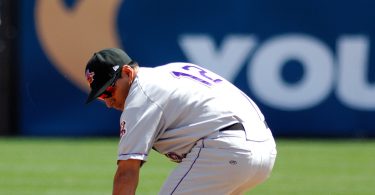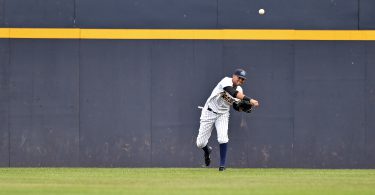The Situation:
Runner on second, nobody out. The offense is behind 4-3.
The Play:
The hitter swings and scorches a ball back up the middle. The runner instinctively takes a step toward third but the pitcher reaches out and snares the grounder. A little rattled, the pitcher can’t believe that he caught the ball that was crushed right back at him. He forgets the situation for a second, and he assumes that the runner isn’t going. The pitcher steadies himself, turns, and throws to first.
The Outcome:
As soon as the pitcher catches the ball, the runner is hung out to dry. He is already a couple of steps towards third and has all his momentum going the wrong way. But when the pitcher ignores him and throws to first, the runner just keeps running and scampers safely into third base. The next hitter hits a deep fly ball, the run scores, and the game is tied.
What Went Wrong?
This is a play that could affect any infielder when there is a runner on either second or third. Any time that there is a runner in scoring position, less than two outs, and you are not conceding the run, then that runner is your top priority. All it takes is a quick look. As soon as you field the ball, quickly look the runner back to the bag. If you look at the runner, it will freeze him, and he won’t be able to advance when you make the throw to first. In this situation, the pitcher actually could have gotten the runner out had he looked. You can never assume that the runner is going to make a smart base running decision. Always take a look for the lead out, then get the out at first if it is the only one available. Understand your priorities in every situation. Think about those priorities before the pitch is even thrown. It could be the difference that helps you make the smart play.







